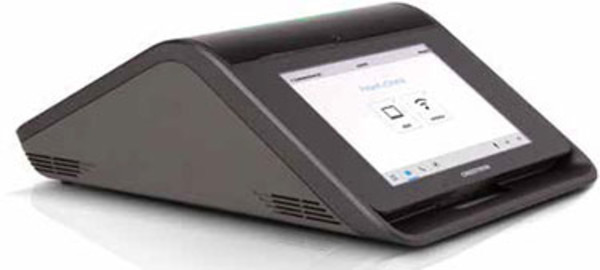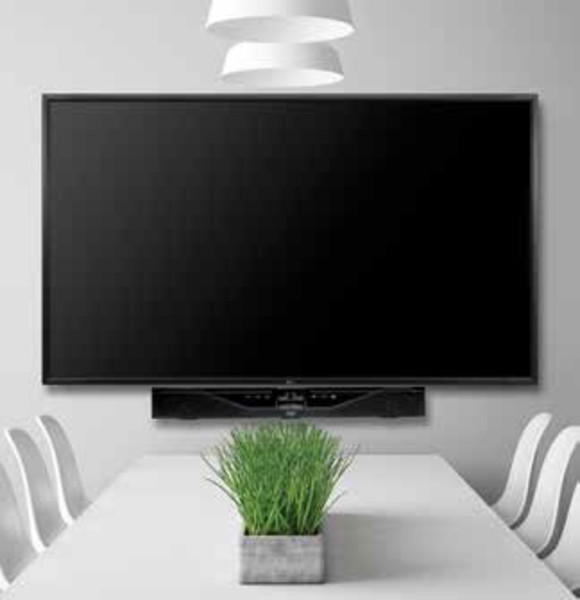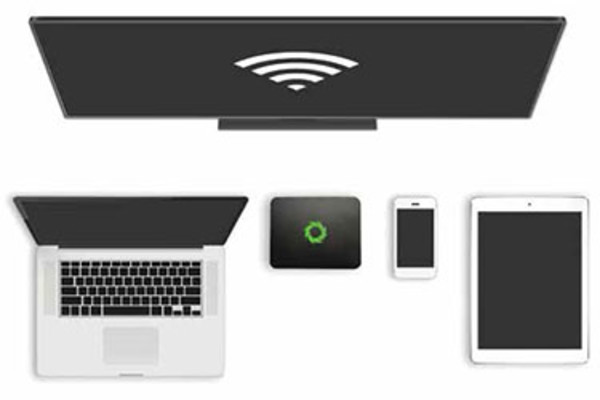Hate it or love it, we’re becoming a much more informal society—and tech culture is a big reason why. While some aspects of this are lamentable (like slackening standards of grammar), it’s been an undeniable boon for the world of business: it equates to better productivity.
Perhaps no concept better illustrates this transformation than the proliferation of huddle spaces. Rather than the age-old concept of employees pitching ideas around a boardroom table in a hierarchal, structured meeting, companies are seeing the benefit in facilitating off-the-cuff collaboration—making the most of the moment when inspiration strikes.
“Huddle rooms were born from the desire to be agile and ubiquitous,” said Lieven Bertier, director of GTM strategy and services at Barco. “People walk in and out of the room without ‘booking’ the room, and with their phone, tablet, or laptop. They demand an immediate and responsive interface, usually starting with whatever is on their device, whether that’s FaceTime, Skype, Slack, ClickShare, or another app.”

This intuitiveness and need for immediacy was the inspiration behind Barco’s ClickShare interface, which is designed for people to simply connect to a display and begin sharing. And, as Bertier pointed out, it helps catalyze another important trend: connecting with remote workers. “But more importantly, the new workflow matches today’s knowledge economy: the ease and method of working together between multiple people, teams, and disciplines is becoming a key competitive differentiator,” he said.
The huddle concept, at its heart, helps enterprises capitalize on a premium resource: space. “Many offices may have one or two dedicated conference rooms and still need more meeting space,” said Gene Houck, national sales manager, Installed Sound, Audix. “Huddle rooms can be created out of smaller rooms and even some open space areas.” In other words, traditional boardrooms still serve a purpose, but for most uses, technology has rendered them inessential. “Nowadays, almost any place can act as an office, provided you have a laptop, tablet, or smartphone,” Houck said. “Since huddle room meetings can be conducted on the fly, decision making can be speedier and productivity levels increased.”
So how exactly would you define a huddle space? According to InFocus’ CMO Brady Bruce, it’s not as determined a concept as the boardroom. “Huddle rooms can come in different shapes and sizes, depending on the organization and how a space is being used,” he said. “For example, Portland State University created a Decision Theater with several InFocus Mondopads lining the room, which each serve as their own huddle spaces that different groups of students can use to review documents, videoconference with professionals, or practice presentations. Or other offices may prefer a smaller huddle room that can accommodate a single group, with AV technology that complements other engineering, medical, or training equipment.”

As for the typical size, Yamaha/Revolabs VP of global business development and product management, Philip Marechal, sets the user range at four to six employees. That means a scaled-back AV solution is required: “Traditional, large-room videoconferencing systems would be overkill for this application,” he said. Still, for professional collaboration, companies would prefer to have better tools than just laptop cameras and microphones, which can hinder communication. Yamaha’s CS-700 Video Sound Bar was designed with this exact application in mind, and integrates an adaptive beamforming microphone array with four speaker elements and a wide-angle HD camera—essentially taking the convenience and familiarity of laptop videoconferencing and giving it a professional edge.
Perhaps the single most important distinction between huddle spaces and traditional meeting rooms isn’t their size, availability, or simplicity of technology, but their purpose. According to Mersive’s CEO Rob Balgley, the behavior they exist to catalyze is “peer-to-peer collaboration, which is fundamentally different than traditional presentation-style meetings.” For Balgley, this inherently raises a question not unlike the one that likely led to the Yamaha’s soundbar solution: how much technology do these spaces need? “From a technology standpoint, it’s a tall order,” he said. “How do you deliver the capabilities of high-end meeting rooms, with greater ease of use, on a huddle room budget?”
And, while the budget on each space may be small, the cost of integrating many of them can be quite consequential; the investment had better pay off. So how do you make sure people will actually use them?

“The answer is probably more software and less hardware,” Balgley said. “At Mersive, we’ve adopted an ‘every-room’ model for Solstice, our software-based wireless content sharing solution. In terms of features, usability, and price, Solstice is designed to serve all classes of meeting spaces.”
This adaptability is something that Crestron considered carefully when designing its all-in-one Mercury tabletop conferencing system. “Where there may have been one conference room before, you will now find 10 unique huddle spaces that feature a variation in technology,” said Jeff Singer, Crestron’s executive director of product marketing. “When you have smaller spaces, and more of them, there are a number of key factors an organization must consider, which leads them to design, manage, and protect these spaces differently than before.” Key among those considerations, Singer pointed out, is network security: rather than connecting to share ideas over a secured boardroom system, the huddle concept often leads to employees using their own personal devices, which may not be set up to protect against breaches. Therefore, by ensuring communications go through a device like the Mercury solution, IT managers can be assured of the security of sensitive information that may be passed around.
Speaking of IT, Yamaha/Revolabs’ Marechal pointed out another important consideration when replacing one or two high-end videoconferencing systems with a number of huddle systems based on lower-cost, mainstream platforms like Google and Microsoft’s Skype for Business. “While these bundled solutions might reduce a business’ overhead, they can also place undue strain on the IT department,” he said. “The need for enhanced IP and seamless integration between all the solutions means increased support.” Nevertheless, he goes on to say, “As internet bandwidth continues to drop in price, video applications will become even easier to deploy.”
As that happens, there will be more opportunities for integrators to help more businesses integrate huddle spaces—a win for everyone. So, while the concept may have once seemed like just another fad bound to fizzle, the truth is huddle rooms have more than proven their merit in a variety of applications; they won’t be going away anytime soon, Audix’s Houck opined. “Ultimately, huddle rooms are and will continue to become more and more utilized and popular.”

